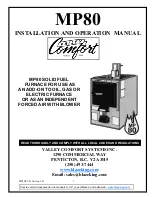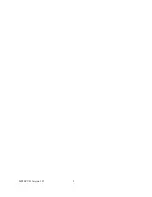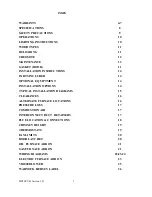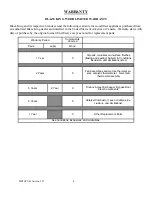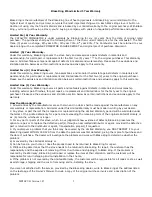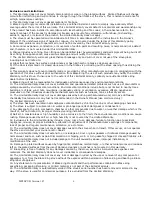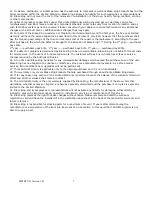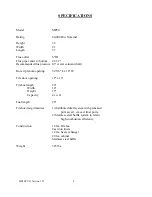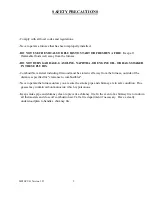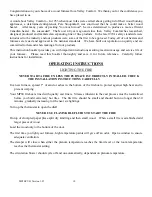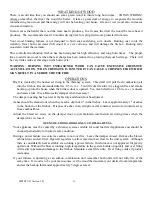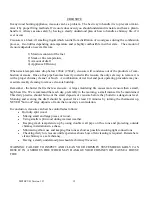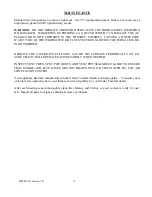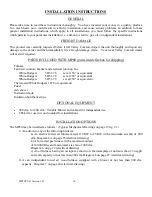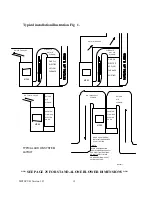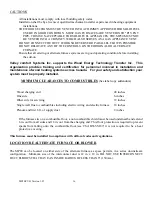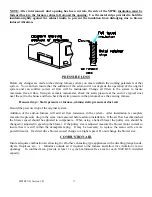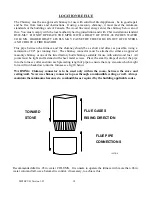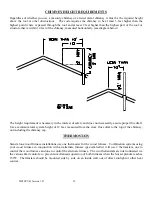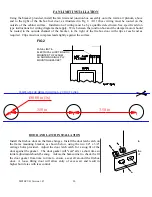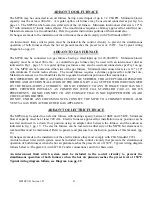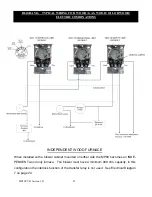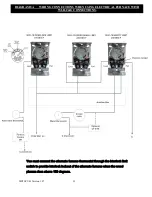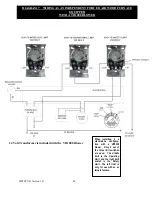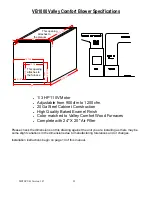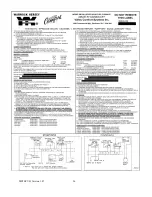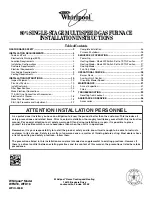
MP80.PUB Version 1.07 12
CREOSOTE
In any wood burning appliance, creosote can be a problem. The best way to handle it is to prevent or mini-
mize it by proper firing methods. If creosote does occur you should understand its nature and have a plan to
handle it. Always assure safety by having a clearly understood plan of how to handle a chimney fire, if it
ever occurs.
Creosote is a black, ill smelling liquid which results from distillation of wood gases during the combustion
process. It solidifies depending on temperature and is highly combustible in either state . The amount of
creosote depends on several factors:
1) Moisture content of the fuel
2) Stack or flue temperature
3) Amount of draft
4)
Appliance
Efficiency
When stack temperatures drop below 120oC (250oF), creosote will condense out of the products of com-
bustion or smoke. Once a flue pipe becomes heavily coated with creosote, the only safe way to remove it is
with a proper chimney cleaner or brush. A combination of wet fuel and poor operating procedure may ne-
cessitate weekly cleaning to remove creosote buildup.
Remember - the hotter the fire the less creosote. A large smoldering fire causes more creosote than a small,
high heat fire. We recommend that each day, preferably in the morning, a small intense fire be maintained.
This daily practice should burn out the small deposits of creosote before they build to a dangerous level.
Morning and evening the draft should be opened for at least 20 minutes by turning the thermostat up.
NEVER "burn out" large deposits of more than one day’s accumulation.
In conclusion, creosote can best be controlled as follows:
Burn dry split wood.
Mixing small and large pieces of wood.
Using smaller split wood during warmer weather.
Keeping stack temperature up by using double wall pipe on flue runs and protecting outside
chimney installations in a chase.
Minimizing elbow use and keeping flue runs as short as possible ensuring tight connections.
Checking daily for creosote until experience shows how often cleaning is required. Remember a
clean chimney is a safe chimney.
Having a clearly understood plan should a chimney fire occur.
WARNING: FAILURE TO INSPECT AND CLEAN YOUR CHIMNEY SYSTEM REGULARLY CAN
RESULT IN A SERIOUS FIRE WHICH MAY DAMAGE YOUR CHIMNEY OR CAUSE A HOUSE
FIRE
Summary of Contents for MP80
Page 2: ...MP80 PUB Version 1 07 2...
Page 26: ...MP80 PUB Version 1 07 26...

